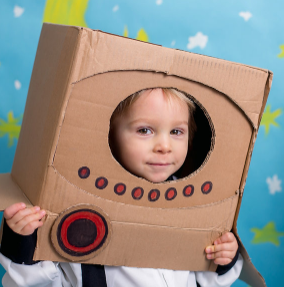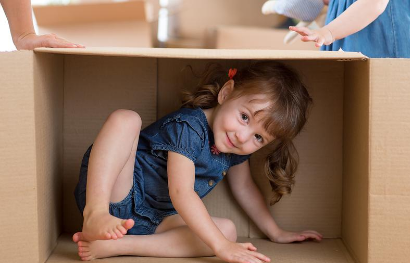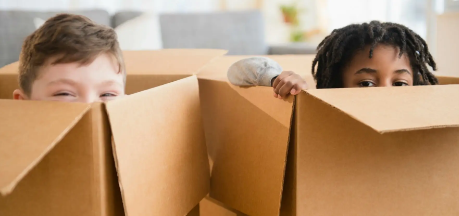
NOT Just a Cardboard Box!
By: Hayley Hone
I'm sure you have at the very least heard the story of a child who, when receiving a gift, was more interested in the packaging than the present? Parents laugh, until the day it happens to them. If it has not happened to you yet, I'm pretty sure it is coming! Is it all bad though? I'm yet to meet a pre-schooler, or a pre-school teacher in fact, that doesn't light up with excitement at the sight of a sturdy box, particularly if they can fit inside!
Why though? And why should it not only be allowed but actively encouraged? A box is, to put is simply, an open-ended loose part. This means, among many things, it allows children to use their imagination, creating their own scenarios, stories, and settings. Is it a house, a boat, a rocket? The possibilities are only limited by imagination, which an empty box can help to develop!

The open-ended play that comes from a box requires children to think critically and actively make decisions. It also gives children the opportunity to make mistakes and rectify them with little or no consequence. This, in turn, fosters independence; allowing children to take initiative and think for themselves. This all helps promote self-confidence and self-esteem!
Building emotional intelligence is another benefit to box fun! While acting out different roles and experiences, children can begin to understand and manage their feelings and also empathise with others and develop an understanding of others' emotions.
Boxes, especially if you have access to a few different sizes, often involves physical movement and manipulation. Whether it's stacking, pushing, ripping, opening and closing, or climbing in and out, boxes can support the development of fine and gross motor skills, coordination, and spatial awareness.
A group of children playing together, even (or especially!) if there's a few disagreements, promotes social skills and collaboration; letting children learn to communicate, negotiate, and share ideas with their peers. They take turns, listen to others, and begin to respect a different perspective.
Open-ended play, like that with a big box, sparks curiosity and fosters a love for self-motivated learning. While becoming engaged and motivated in play, is when deep-level learning happens and children are more able to make sense of their world and surroundings.

Development of positional language vocabulary is another learning opportunity when playing with a cardboard box; in, on top of, next to, behind, under, etc., along with open and closed can, all be used in context, solidifying the vocabulary for a child.
If your child or a child in your setting is a little unsure how to begin their play or doesn't have the confidence to share ideas, I highly recommend the fiction book, not a Box by Antoinette Portis. It depicts a little pig exploring a box and using it to play in many different ways while correcting those who think it's 'just a box'. It's great for repeated refrains and prompting some imaginative loose parts to play.
The best thing about a cardboard box? They are usually free! If you aren't expecting a delivery any time soon, ask your local supermarket, I've found that they are more than happy for you to take them off their hands.
Have fun exploring and playing and do let us know what your box becomes!


1 Comments
Ben
16-Oct-2023
Absolutely fantastic article. Who doesn’t love a cardboard box? I have countless memories of my children making all sorts with them!